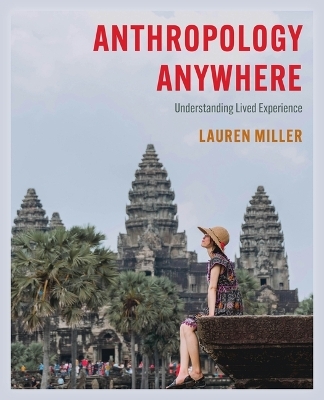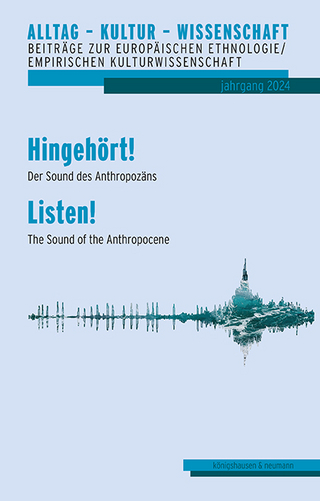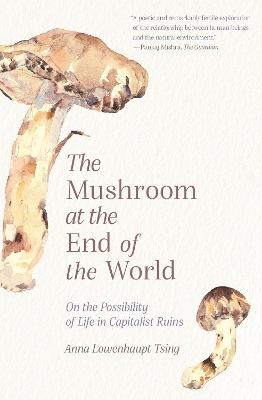
Anthropology Anywhere
Rowman & Littlefield (Verlag)
978-1-5381-3278-4 (ISBN)
- Noch nicht erschienen (ca. Dezember 2024)
- Versandkostenfrei
- Auch auf Rechnung
- Artikel merken
Using contemporary theoretical approaches as a foundation, Anthropology Anywhere introduces anthropology as a way for students to ask questions about the world around them, from classroom experiences to global conflicts. Without sacrificing topics expected in an anthropology text, this book presents a new framework for today’s students to think about how the same issues shape very different lives, highlighting how topics such as relationships, prestige, and social roles transcend place alone.
Lauren Elizabeth Miller, Texas Tech University Lauren Elizabeth Miller is an assistant professor of anthropology at Texas Tech University. She teaches courses in cultural anthropology, anthropological theory and method, Latin America, performance, and tourism.
Introduction
•Here, we introduce the framework that makes our text unique, foregrounding the global nature of anthropology work today. Although the topics one would expect to see in a classic anthropology textbook are present, we demonstrate the ways in which contemporary anthropologists follow theoretical questions anywhere they lead, not just within restricted geographical areas. In short, we demonstrate that the tools anthropologists use are applicable anywhere, from the global to the local, from world events to their personal lives.
Section 1: Thinking Anthropologically
In this section introduction, we use the concept of epistemology to help students understand that anthropologists’ approaches to studying the world are just as culturally situated as the worldviews of any of the people we study.
Chapter 1 – What is Anthropology?
•This chapter explains what it means to think like an anthropologist. In the course of introducing anthropology as a four-field discipline—and explaining that there are specialized interests like medical anthropology that bridge these—we argue the importance of holism as a central approach of what anthropologists do. Anthropologists excel at understanding the complex connections between diverse facets of human life, developing an understanding of societies in different places and times by looking for patterns and meaning in such wide-ranging areas as belief systems and settlement patterns.
Chapter 2 – What is Culture?
•We define culture as learned and shared patterns of thought and behavior that humans acquire through the process of enculturation. We introduce the concept of ethnocentrism in conjunction with our argument that all cultural systems are based upon an underlying logical system and are deserving of equal dignity. We go beyond simplistic dichotomization of ethnocentrism and cultural relativism, showing students that there are main types of ethnocentrism: one that might be better thought of as naïve realism, taking for granted that one’s own way of looking at the world is the only option, and the other which – while still problematic insofar as it argues the superiority of one’s own culture over that of other peoples – at least acknowledges that there are different ways of carrying out social life. In our discussion of cultural relativism, we argue that cultural practices can only be evaluated from within the culture, but at the same time, cultural relativism does not equate with moral relativism and anthropologists can and do take a stand on human rights issues.
Chapter 3 – How Do We Know?
•In this chapter, we explain that cultural anthropologists learn about the world around them by engaging with the lived experience of others. Sometimes this is done by living with the people they are studying for extended periods of time and participating in their daily life to the greatest degree possible. In other cases, anthropologists may use interviews, surveys, focus groups, visual methods, or other techniques to gather data about these cultures. We also explain that although anthropology in an earlier era was more often done in small-scale, relatively isolated societies, today, a great deal of work is done in translocal contexts, which necessitates new ways of approaching data collections. This chapter also includes a section on research ethics.
Section 1: Synthesis
In this synthesis section, we remind students that the scientific worldview is but one of many approaches to knowledge, which raises questions such as how to research and write about phenomena that are not able to be accounted for within the Western scientific tradition.
Section 2: Cultural Transmission
These chapters concern how systems of meaning are shared among members of a community. In this introduction, we reference the concept of enculturation (which they learned about in Chapter 2) to show students that, simultaneously, (1) there are cross-cultural similarities regarding many of the mechanisms through which people learn their culture(s), yet (2) the specific forms of instruction will be unique to each culture.
Chapter 4 – Communication
•Rather than simply focusing on language, this chapter takes a broad look at the various ways in which humans communicate meaning. We begin with a brief introduction to semiotics, distinguishing between icons, indices, and symbols as different kinds of signs. We then introduce written and spoken languages as sign systems, including the design features that make human language – including non-spoken forms like sign language – unique. Our discussion also explores the paralinguistic features of communication such as pace-of-speaking and tone-of-voice, which provide people crucial information for interpreting what is meant in any given context. We then discuss how languages—like other aspects of culture—change over time. We conclude the chapter with a section on body language, leading into the following chapter on performance.
Chapter 5 – Performance
•This chapter addresses the role performance in everyday actions and activities. Both cultural performances and performances of culture reflect and contribute to social change. We address several aspects of cultural performances, including the framing devices that signal when a performance is beginning and ending and the role of intertextuality in understanding performances. In discussing the performance of culture, we show that performance is a key mechanism of cultural transmission, particularly in the presentation of self in everyday life and with regards to gender as a performed, cultural construct. We show that it is often through performance that rules about who can do what where and when in a culture are negotiated. We end this chapter with an examination of the ways in which rituals can be studied though a performative lens, which leads into the following chapter on beliefs.
Chapter 6 – Belief
•This chapter addresses the multiple beliefs that exist within human societies, including scientific, religious, and magical beliefs. All of these are ways of knowing that inform individual and collective actions. In addition to addressing the different types of magic, the different ways in which religious systems are organized, and how different belief systems function, we also explore the creative ways in which people blend aspects of different belief systems, sometimes harmoniously and other times less so. This chapter also includes a section on origin stories and other myths that inform the way people think about their culture, society, and/or heritage.
Section 2 Synthesis:
Having explained how culture can be transmitted through each of these three key mechanisms—communication, performance, and belief systems—this section synthesis uses art as an example to discuss the intersections of all three concepts. More specifically, we complexify the concept of cultural transmission by highlighting how art can be used both to reinforce the status quo and as challenge.
Section 3:Assigning Meaning to Difference
The introduction to this section will include an explanation of intersectionality, which will help students understand that the various concepts should not be viewed in isolation, but as ever-present aspects of identity that are always interacting and will have different salience in different contexts. Pushing students to think beyond the categories introduced and discussed in each of the chapters as separate topics, we also pose the question of how being differently abled intersects with the various identities an individual may hold. We also explain in this introduction what is meant by the idea of something (e.g. race or gender) being a social construct.
Chapter 7 – Race & Ethnicity
•This chapter explains that race is a social construct, which was invented during European exploration as a justification for exploitation of groups classed as non-white. While acknowledging that certain populations do exhibit specific phenotypic traits, we explain that there is no biological basis to ‘race’ and that the phenotypic variations we see are adaptations to the environment. As a way of problematizing this often taken-for-granted category, we explore the range of ways in which different societies classify people according to ‘race.’ For example, Brazil has many more color terms to describe people’s
‘race’ than does the U.S. However, this does not mean that ‘race’ is irrelevant as far as
one’s lived experience is concerned. While Brazil may use a wide array of descriptive color terms, being white or non-white is still an important predictor of one’s trajectory in life. We will also discuss genocide as an example of the saliency of race in real life. In this chapter, we also discuss ethnicity as a claimed rather than externally imposed affiliation with others based on a sense of shared ancestry, language, religion, and/or other feature of culture.
Chapter 8 – Gender & Sexuality
•This chapter unpacks sex, gender, and sexuality as often conflated concepts, and highlights how each is socially constructed. Rather than oversimplifying sex as simply
‘biological,’ we use cross-cultural examples to illustrate the social categorization of a very limited number of traits based on vast hormonal variance. We then differentiate sex
from gender, using the concept of ‘performativity’ to explain how individuals recreate and perpetuate social expectations through their daily enactments. Turning to sexuality,
we explain that it is not linked to either sex or gender, and in fact varies not only regarding whom one is attracted to, but also interest level in sex at all. In each case, we
note that how one identifies and portrays themselves is informed both by internalized social standards, but also based on how one feels they will be perceived by those around
them, especially those who matter most (whether personally, professionally, or politically).
Chapter 9 – Relationships & Belonging
•In some societies, the groups into which an individual is born will be of utmost importance in determining his or her path in life – influencing everything from how he or she makes a living to who he or she can marry. In other societies, people identify more closely with their chosen social groups, whether those are sports teams or social clubs, fraternal organizations or interest groups. Yet even in these cases, an individual’s family may strongly influence their choices. This chapter explores classic anthropological concepts like kinship, descent, exogamy, etc., across very different settings to demonstrate their wide-ranging applicability as anthropologists work to understand the issue of belonging.
Section 3 Synthesis:
This synthesis challenges students to consider the role of the individual vis-à-vis their society. Having framed the section in terms of intersectionality, and then provided information about different aspects of identity, this section asks what it means to be a member of a group when the group itself may encompass vast diversity.
Section 4:Social Mechanisms
This section addresses the structural dynamics of communal life, ranging from how humans meet basic needs to issues of complex social and legal organization. Using the ideal types of mechanical and organic solidarity as bookends, and reinforcing our commitment to anthropology’s holistic framework, we provide scaffolding for students to understand how social institution cannot be understood in isolation, but relative to broader social dynamics and structures.
Chapter 10 – Production
•This chapter addresses the ways in which humans produce and use food and objects of material culture. This includes traditional forms of subsistence (e.g. horticulture, pastoralism and agriculture) as well as the cultural meanings attached to food. It also includes the diverse ways in which humans fashion shelters out of the resources available in their environments – from pole-and-thatch houses to brick mansions. It also includes manufacture of non-essential, luxury goods.
Chapter 11 – Exchange
•This chapter incorporates the primary mechanisms of exchange (e.g. reciprocity, redistribution, and market exchange); however, we also foreground several situations that complicate such neat divisions. We also examine the institutions that organize these exchanges as well as economic exchanges that happen outside of these institutions (e.g. the gray market).
Chapter 12 – Governance
•Through our discussion of who has influence over others, in which situations, and why, we go beyond the basic distinctions of band, tribe, chiefdom and state to present a more nuanced exploration of leadership and governance. We situate the tools of governance like persuasion and power as well as authority and respect along a continuum, examining specific actions like conflict resolution through this framework.
Section 4: Synthesis
This section uses examples to explain that although each concept is treated separately here, there is often a close relationship between production, exchange and governance. We also make the point that even in small-scale societies located in relatively isolated places, external events and situations (e.g. climate change) are having a profound effect on which strategies people choose and how their communities must adapt.
Section 5: Anthropology Everywhere
Revisiting the text’s title, Anthropology Anywhere, we reiterate our perspective of anthropology as a way to ask questions about the world, and remind students that all the topics they have been encountering in this text always intertwine with lived lives at both global (macro) and individual (micro) levels.
Chapter 13 – Globalization
•Globalization in the contemporary era is characterized by both speed and scope of global interactions. Having presented examples in each of the chapters, here we pull everything together to show how these concepts intersect in complex ways, with intended and unintended consequences for individuals situated along the various flows of globalization.
Chapter 14 – Your Lived Experience
•Unlike any other textbook, we conclude by inviting students to explore the ways in which the same issues they have encountered at the global level show up in their everyday lives. Reinforcing the text’s premise of anthropology anywhere, students are encouraged to
view the world around them through the theoretical lenses presented in this book.
| Erscheint lt. Verlag | 16.12.2024 |
|---|---|
| Verlagsort | Lanham, MD |
| Sprache | englisch |
| Maße | 191 x 235 mm |
| Themenwelt | Sozialwissenschaften ► Ethnologie |
| Sozialwissenschaften ► Soziologie | |
| ISBN-10 | 1-5381-3278-8 / 1538132788 |
| ISBN-13 | 978-1-5381-3278-4 / 9781538132784 |
| Zustand | Neuware |
| Haben Sie eine Frage zum Produkt? |
aus dem Bereich


